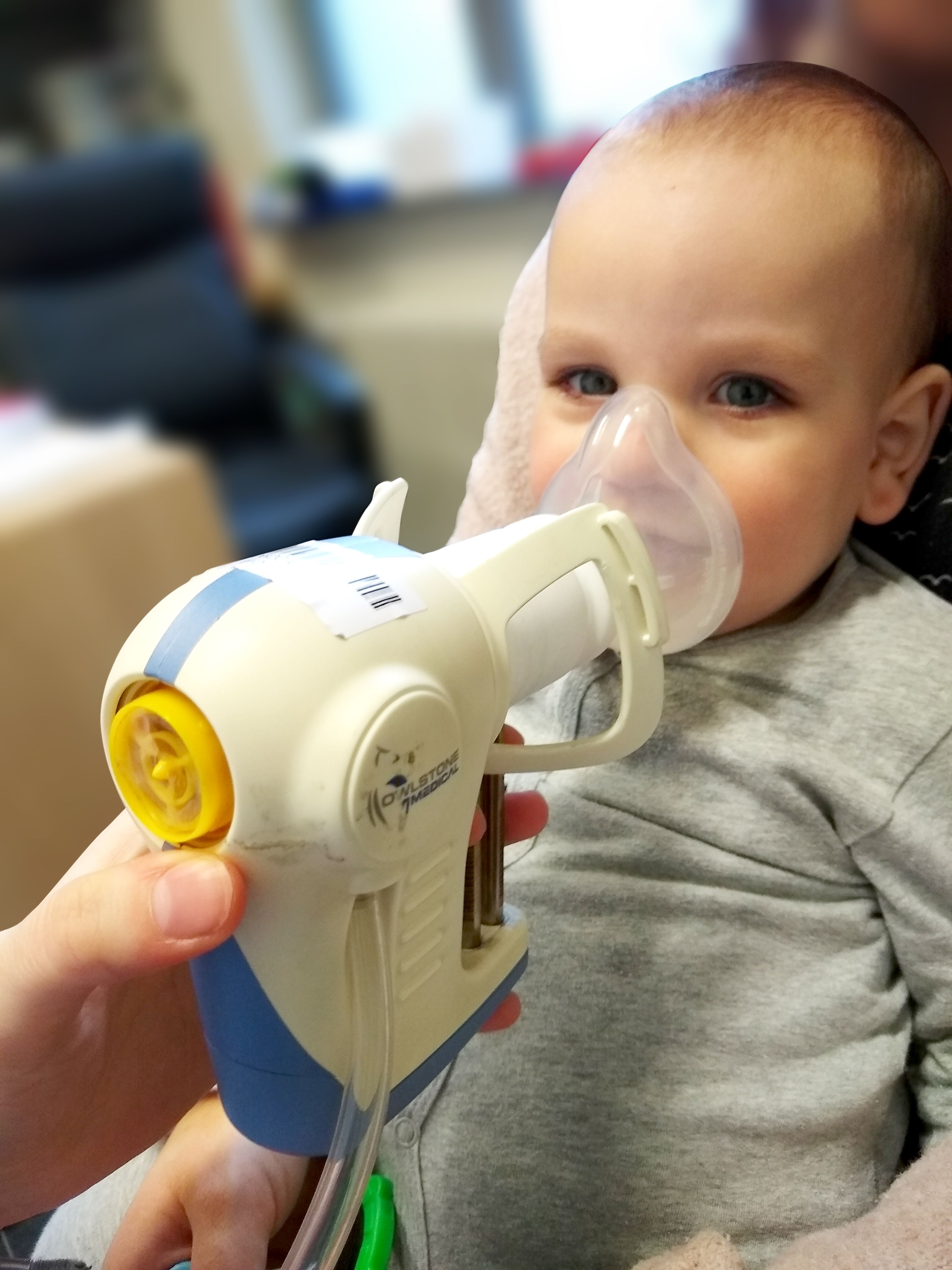Rattling or wheezing?
Dozens of worried parents consult their GPs every week because their infants are 'wheezing'. Although they use the word 'wheezing', they sometimes mean 'rattling', and the difference is important because 'rattlers' and 'wheezers' need different treatment. VITO and the Jessa Ziekenhuis hospital have set up the NiNbl study in the framework of the Limburg Clinical Research Center (LCRC) to improve understanding of the difference between these symptoms.
Is noisy breathing common in babies?
Dr Marc Raes (medical director of paediatrics and adolescent medicine at Jessa Ziekenhuis): Almost one in two children will go through a phase under the age of 2 where their parents think they are 'wheezing' or 'rattling' and almost one in four of them is more likely to have noisy breathing.
You talk about 'wheezing' or 'rattling', but what is the difference?
'Wheezing' is caused by an obstruction in the lower airways, while 'rattling' means too much mucous is being produced in the lower airways. So, two kinds of noisy breathing, each with a different underlying mechanism, creating different stresses and requiring different treatment.
Is this difficult to treat? Is the treatment stressful for the baby?
Children aren't actually particularly bothered by 'rattling', but it's definitely a worrying sound for parents. This kind of noisy breathing also often disappears over time; we use anticholinergics where treatment is required. In contrast, we're more likely to treat 'wheezing' with corticosteroids and bronchodilators. 'Wheezing' can sometimes develop into asthma, so it's important that we know what kind of breathing the child is displaying. Parents' descriptions aren't very reliable and we don't have any non-invasive technology that lets us investigate what kind of noisy breathing is actually occurring. Given that many parents are likely to visit their GP at some point about this symptom, there's clearly a high demand for proper diagnosis.
What exactly is the NiNbl study investigating?
Gitte Slingers (doctoral student at LCRC, associated with VITO): Doctors make a diagnosis by listening to and tapping on the chest. The NiNbl study – or the Non-invasive Noisy breathing Infants study, to give it its full name – aims to optimise the diagnosis of noisy breathing in infants and young children. We want to make an objective distinction between these two types of noisy breathing by looking for biomarkers in exhaled air and in nasal mucous. We also carry out a sound analysis on the breathing. In this study, we want to compare these methods with current standard diagnostics in clinical practice. We hope this will enable us to reach a faster objective diagnosis, so we can quickly start administering the appropriate treatment.
Can experts always tell the difference between 'wheezing' and 'rattling'?
Gitte Slingers Not always. We recorded the sounds that babies and toddlers make and played those clips to paediatricians and even they couldn't make a conclusive analysis. Support from an unexpected quarter – Professor Toon van Waterschoot at the Department of Electrical Engineering (ESAT) at KU Leuven – has also enabled us to investigate the sound pattern. Two of his Master’s students have linked their thesis to our project and are now looking for algorithms in the wheezing and rattling. We hope that they will ultimately be able to identify algorithms that let us make an objective distinction between wheezing and rattling.
How can VITO help with this?
Gudrun Koppen (scientific researcher at VITO): As Gitte has explained, we want to use the NiNbl study to find biomarkers. We know that the different types of noisy breathing evolve and are treated differently, so we suspect that different underlying pathophysiological mechanisms are involved. If that's the case, then differing biomarkers will also be involved, or the same biomarkers in different ratios. Exhaled air and nasal mucous reflect what is going on in the airways. Both are also easy to collect without having to carry out procedures that upset the child – they don't have to do anything and they experience very little discomfort. We capture the exhaled air in a small mask that goes over the mouth and nose. The volatile organic components (VOCs) that we want to analyse are collected in a kind of absorbent cartridge inside the mask that captures the air and we collect mucous from the nose with a soft absorbent wipe.
You've already been working on this for a while now. Can you give any hints about the results yet?
The initial results from around 20 children with noisy breathing show that the nasal mucous that we collected with the nasal wipe often contains one or more viruses. We were able to measure all the selected inflammation markers properly in these children. It's still too early to draw any conclusions, but we were interested to find that we've already been able to detect an evolution in these biomarkers during follow-up examinations on some patients. So there's definitely more to follow up on!


